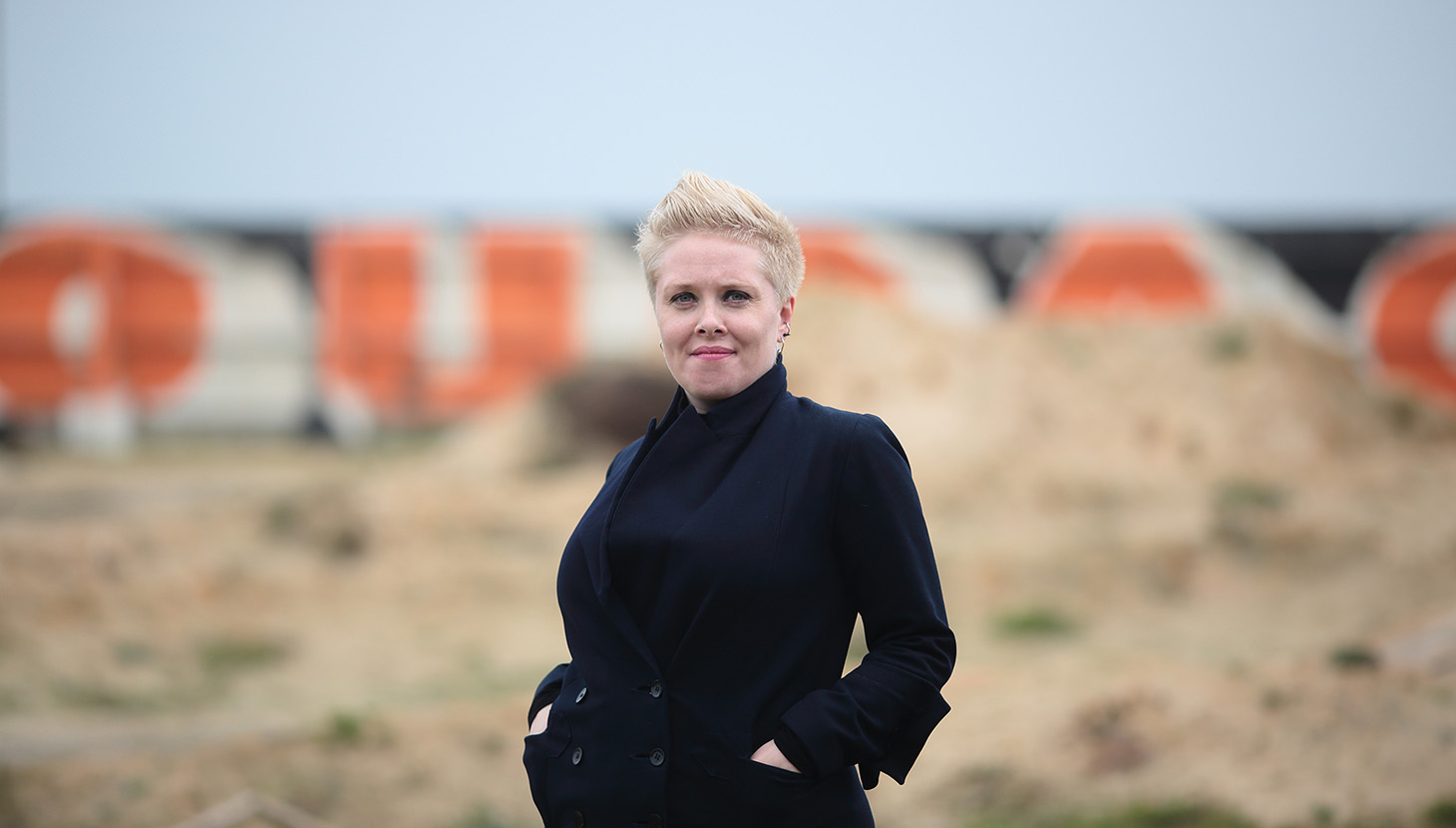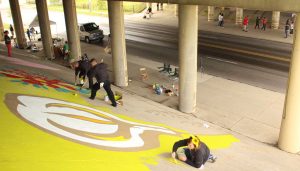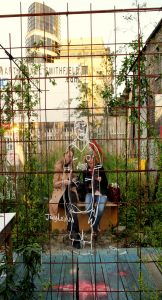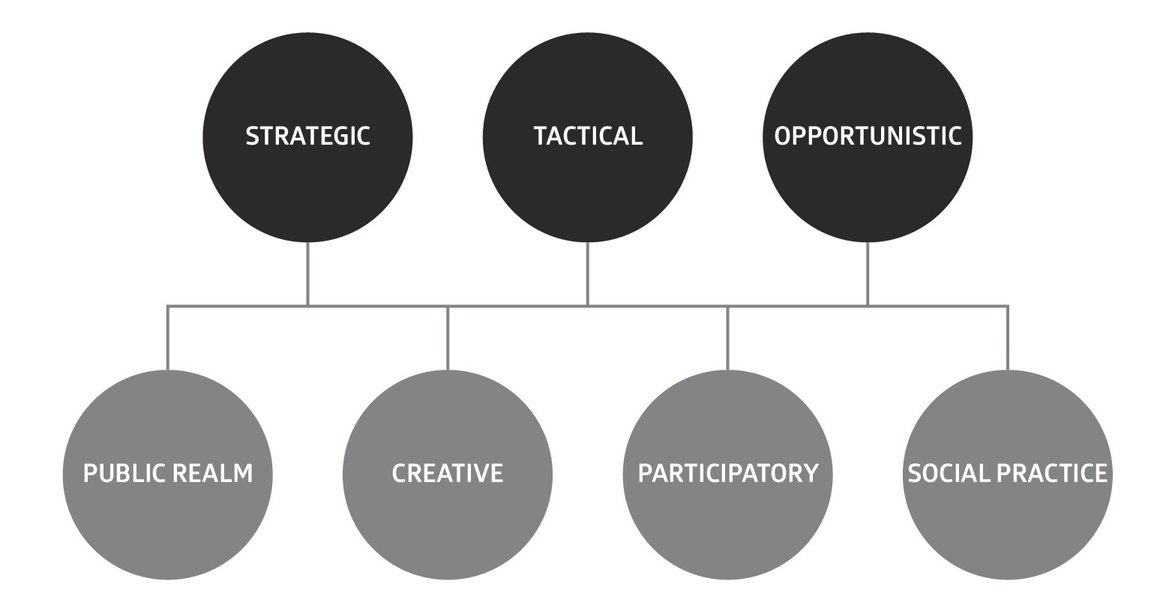
Dr Cara Courage AoU (credit: Rob Orchard)
The research was concerned with grassroots arts-led interventions in the urban realm, participated in by citizens with an aim to improve the urban lived experience and to form and cultivate connections between people, place and community. Operating at the intersection of arts, placemaking and urban theory, and place attachment thinking, my research used a comparative approach based on participant observation and interviews at three case study sites: Art Tunnel Smithfield, Dublin, an outdoor art gallery and garden space; The Drawing Shed, Walthamstow, London, a social arts practice predominantly operating in housing estates in Walthamstow and Wandsworth; and Big Car, Indianapolis, an arts organisation operating across the whole of this Midwest USA city.

Big Car, Indianapolis (2014)
![Ed Woodham, Danger Deep Water (2014), part of The Drawing Shed, IdeasFromElse[W]here (2014)](https://www.academyofurbanism.org.uk/wp-content/uploads/2016/09/rsz_ed_11-300x171.jpg)
Ed Woodham, Danger Deep Water (2014), part of The Drawing Shed, IdeasFromElse[W]here (2014)

Art Tunnel Smithfield, Dublin (2013)
This research was also informed by some 20 years of working in arts in the public realm and built environment education. Current projects include Modern Brighton and Hove, a map of the city’s significant architecture from the last 100 years, with workshops and walking trails; a placemaking project to improve one of central Brighton’s sites of urban blight; and a public art consultation with former pit villages in Nottinghamshire.
I am also working with University of Virginia, Institute for Advanced Studies in Culture and the Thriving Cities Project, on a three-phased project that is looking at the metrics of creative placemaking. The project starts September 2016 and is set to complete January 2017. The project is spurred from the rise of creative placemaking in practice and theory globally and across many public realm sectors. With this popularity though, questions over definitions and claims have also grown and there is a need to draw the various scholarly and popular definitions and assessments of creative placemaking into one place.

Placemaking Typology (Courage, 2014). Artwork: Richard Wolfstrome
I am hoping findings of this research will answer those questions that emerged from my PhD and that have been constant through my practice career – what do we and how can we measure that which we do in placemaking? It’s key for me in this endeavour that I hear the voices of as many aspects of placemaking that I can – if you have something to say, please do get in touch.
Dr. Cara Courage AoU
Connect with Cara